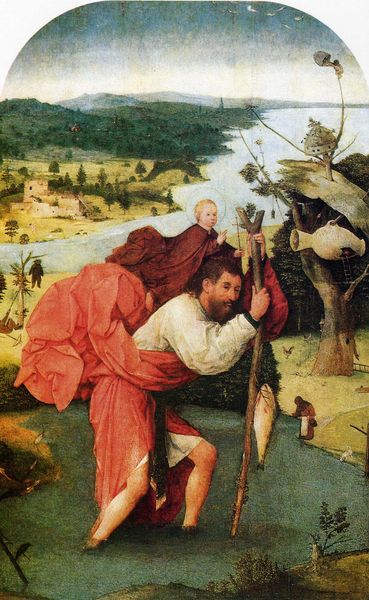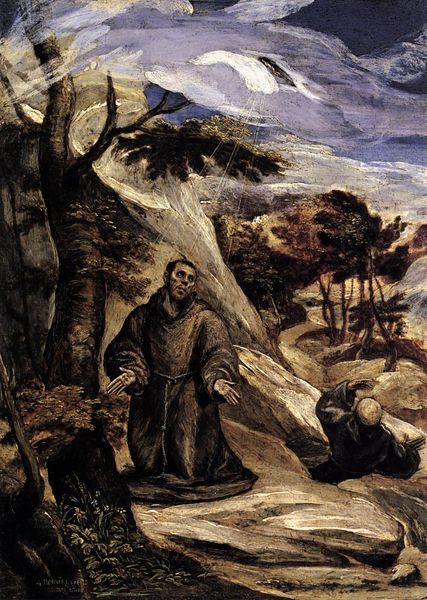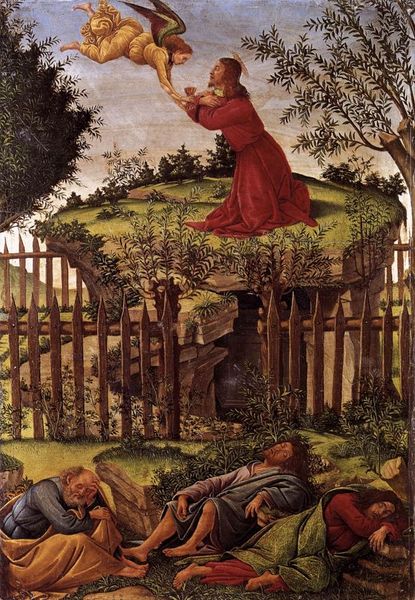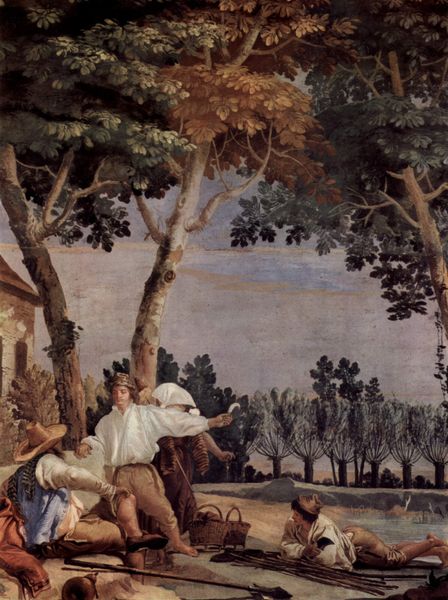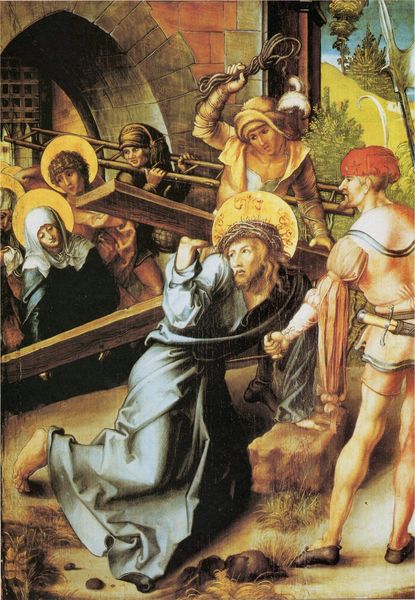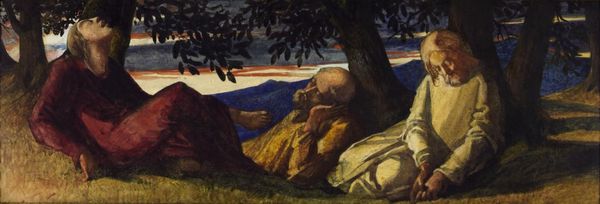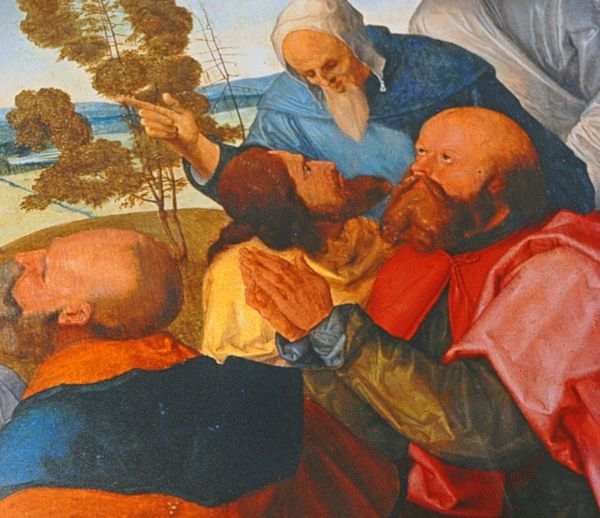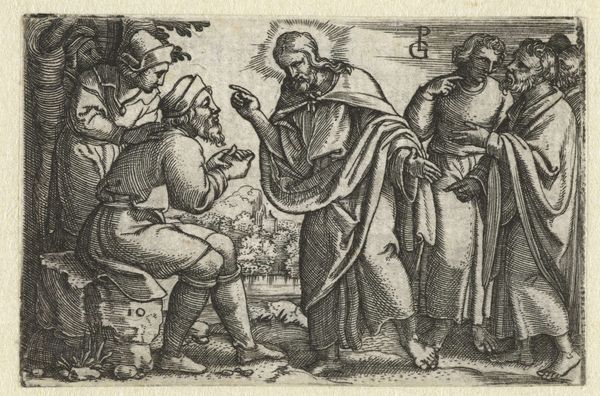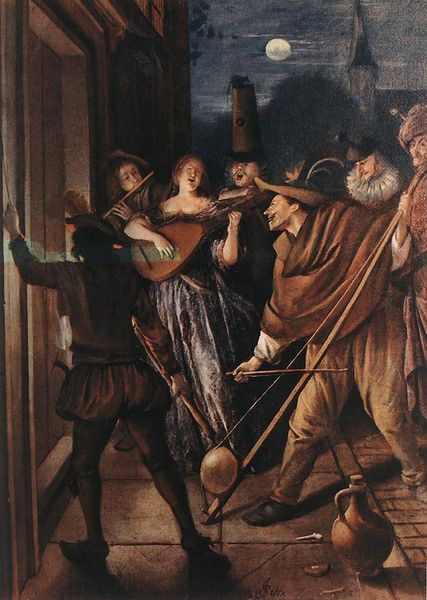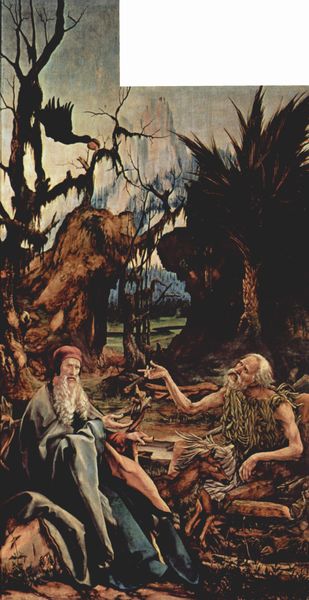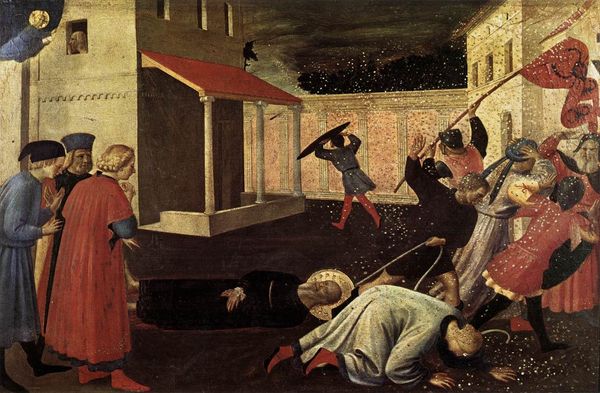
Stigmatization of St. Francis 1502
0:00
0:00
lucascranachtheelder
Academy of Fine Arts Vienna, Vienna, Austria
oil-paint
#
oil-paint
#
landscape
#
charcoal drawing
#
figuration
#
oil painting
#
christianity
#
history-painting
#
northern-renaissance
#
early-renaissance
#
christ
Dimensions: 86.8 x 47.5 cm
Copyright: Public domain
Curator: My eyes immediately go to the angel—or winged figure, more like—raining down toward the supplicant below. There’s a tension and intensity in the way it's presented that pulls me right in. Editor: The "Stigmatization of St. Francis," painted around 1502 by Lucas Cranach the Elder, indeed captures a dramatic moment. But beyond the event depicted, I’m struck by how this work showcases the burgeoning interest in oil paint at that time. It gave artists opportunities to portray textures with richness that were previously unachievable. Curator: Texture is interesting, especially within the symbolism—you can feel Francis's fear and acceptance. And let's look closer: the artist is drawing on established iconography, linking Francis visually to Christ, who also bore wounds representing God’s grace. How potent that would have been for contemporary audiences! Editor: And it's potent now because of the visible hand of the artist. Notice the layers. Early uses of oil like this are all about revealing how things are made and with what, from grinding the pigment to successive glazing. We know the artist engaged with a market demanding ever more "realistic" works, as if mimicking tangible reality with oil paint were somehow holy in itself. Curator: Ah, the tangible made transcendent through representation! It leads us back to Francis. His stigmatization echoes a divine connection. The angel bears these wounds—these *objects*, as it were—that become instruments of grace. Cranach asks us to meditate on that interplay between suffering and spiritual elevation. Editor: Exactly! Look closely, and you see how the medium itself communicates both physical and metaphysical pain. There's an almost forensic element, documenting its making layer by layer in service of this kind of devotional intensity, yet through decidedly earthly, material means. The brushwork carries intention but also the artist’s physical effort. Curator: So, seeing those material choices elevates not only the subject—Francis—but also the artist’s labor and vision. The oil allows Cranach to bridge the divine and the terrestrial—linking spirit and substance so deftly. Editor: It reframes our understanding. It makes this work a fascinating crossroads of artistic labor and devotional representation. Thank you for helping me see it that way.
Comments
No comments
Be the first to comment and join the conversation on the ultimate creative platform.
